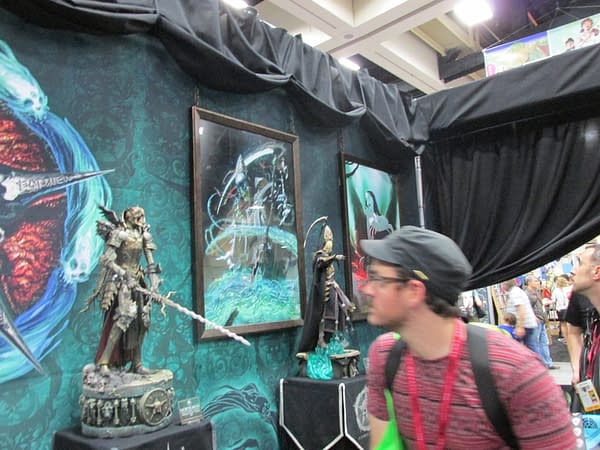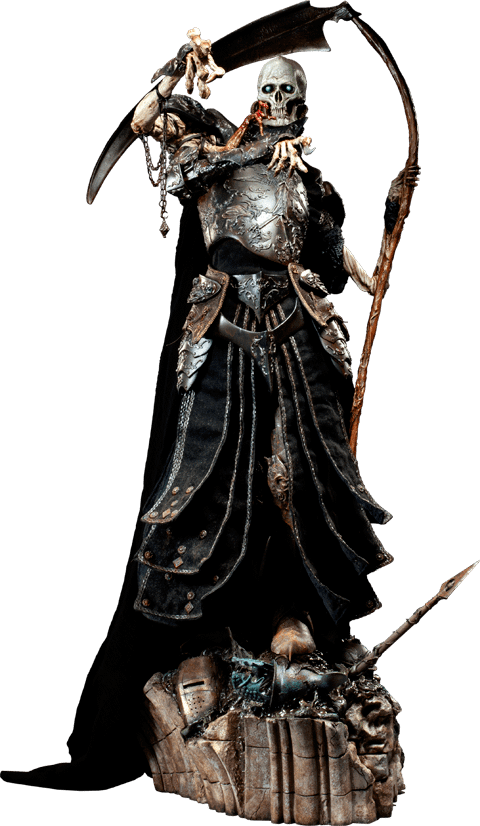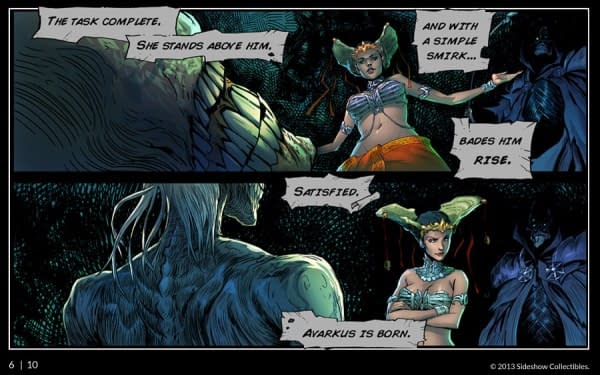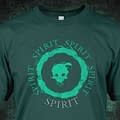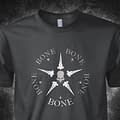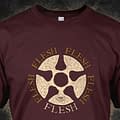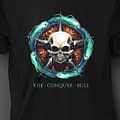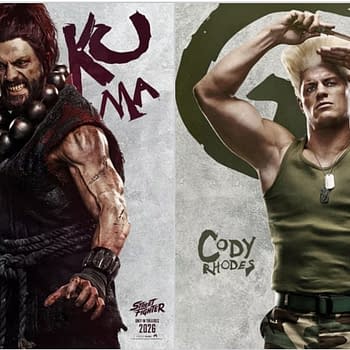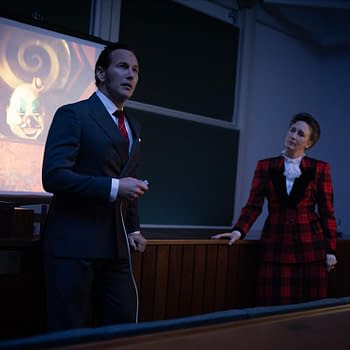Posted in: Movies, san diego comic con | Tagged: collectibles, Comics, court of the dead, entertainment, san diego comic con, Sideshow Collectibles, Tom Gilliland
Death As An Unlikely Hero And Freer Of Souls In Court Of The Dead From Sideshow Collectibles – Talking With Tom Gilliland At San Diego Comic Con
As previously announced, Sideshow Collectibles are launching into interesting multi-media territory with their Court of the Dead concept, delving into wide-ranging world-building that reaches fans as collectible busts, a forthcoming graphic novel, and several ways in which to digitally engage with the world created by Tom Gilliland. And most recently, they've released their "faction" T-shirts for fans as well.
At San Diego Comic Con, I was able to take a tour of the impressively macabre and intricate Court of the Dead display set up on the show floor, and what I found was intriguing, particularly for a fan of mythology concerning the underworld across cultures. The concept, at its most basic, is that Heaven and Hell have engaged in struggle through the centuries, feeding off the energy sources contained in the souls of the dead, but over time, the marginalized underworld and its ruler Death have begun to realize they are tired of playing pawn and servant between two titanic forces that aren't as fixed in their certainties as one might imagine.
In fact, Death himself might be the most egalitarian of rulers and posed with the question of whether he ought to covertly set up his own realm as a third party in this struggle, may present the dead themselves with a way to assert freedom of choice, even in the afterlife and thwart the grand, impersonal schemes of Heaven and Hell along the way.
When the graphic novel for Court of the Dead dawns, we are likely to follow a key identification character, I learned at SDCC, a young female warrior whose skills might be particularly appealing to Death as he builds his army. But as our character encounters the Court of the Dead herself, she discovers underlying struggles within the underworld that may prevent the unified effort necessary to break free from the tyranny of Heaven and Hell. There we encounter several of the figures already presented as concepts in collectible busts by Sideshow, each allying with certain numinous qualities like Spirit, Flesh, and Bone. Will their own internal rivalries upset the possibility that Death can offer a third, freeing path to the dead as they arrive in the underworld?
When I spoke with Tom Gilliland at SDCC, he kindly acted as my guide through the Court of the Dead, and explained some of the big ideas behind his sweeping mythology. Underpinning concepts for Gilliland include the idea that, in general, extremes are a negative thing, and both the Heaven and Hell kingdoms in Court of the Dead represent those extreme and absolutist positions as opposed to the underworld, and working against extremes also leads to better storytelling as you are able to build more well-rounded characters with mixed traits, as he hopes to do in the graphic novel.
The aesthetics of the characters he's created in concept art and statue form are predominantly those of "embracing deterioration", Gilliland explained, hence the peeling away of layers of flesh and bone and the hints at decay in his characters. But they, psychologically, also embrace decay as a kind of badge of identity in affiliation with the underworld, something that sets them apart from Heaven and Hell and gives them identity. The differences between the characters in the Court of the Dead will, primarily, be based on whether they are "spirit born" or "soul born", meaning whether they are supernatural beings by nature or whether they arise from an originally mortal form.
Death himself, Gilliland acknowledges, is an "unlikely hero", but "trapped between warring Heaven and Hell", we develop sympathy for his weariness of this struggle and for his disdain as he watches "souls" of mortal beings being used as "ammunition" that are simply consumed and destroyed in this struggle. Death is, essentially, meant to be the "harvester" of these souls, Gilliland explained at SDCC, but as he goes about these duties and begins to change his mind about his role, he has ample opportunity to "skim off the top" and set aside the most useful souls who could help him as warriors in his planned rebellion.
Gilliland's underworld is a bit like "Ellis Island", he said, a clearing house for arriving souls, and as the orphan son of the "original gods", titanic beings who have been replaced by Heaven and Hell, Death is seeking to find the remnants of his deceased father whose being fills the cosmos in the stuff of souls. Particularly, he's looking for something called "Etherea", shards of the original god's power, which can be found in the souls of all men. He considers the material precious and not to be squandered in the Heaven/Hell war.
The factions that inform Death's underworld are Flesh, Bone, and Spirit, and they each possess different useful traits such as adaptability, logic and order, and experience respectively. Together they might make up a perfect balance if they can find common cause enough in this struggle. Death himself sees the potential here and is willing to be "painted black" to pursue a "higher purpose" and as such he becomes a kind of anti-hero like Batman or Clint Eastwood characters, Gilliland said. He's the constant "underdog" looking for the "weak spots" in the war raging around him to stake his own claim.
As an artist, Gilliland is particularly fascinated by historical periods, the detritus he's working into the detail of his designs for the Court of the Dead. What characters are "wearing" becomes important because everything is totemic. They "relish nostalgia" in the underworld and are particularly obsessed with Roman history, while generally making sure that "nothing is lost" from history that might be preserved in the underworld. Gilliland's biggest influences here range from Christian cosmology to fantasy works, and especially the long history of mankind and what we can learn from historical struggles between factions. The mythology of Court of the Dead, however, is essentially "non traditional", he said, or rather traditional in its elements with a "twist on the edge" of it. He's interested in building "layers" in the Heaven/Hell dichotomy in his storytelling that will no doubt surprise fans in the end.
The statues on display at San Diego Comic Con were fairly breathtaking in their imposing presence and detail, and I could easily pick up on some of the ideas Gilliland shared about his inspiration behind the Court. Each character from each "faction", however steeped in decay, had certain sympathetic elements and recalling that each was carefully choosing their own appearance and "what they were wearing" to convey their personality made studying them that much more interesting. Choosing to wear a mask of bones because one deems it beautiful, choosing to be wreathed in entrails because it's "nostalgic", were concepts foreign to me before I stepped through the gateway into Gilliland's world but they all started conforming to the very specific logic of the Court of the Dead once I explored it.
Here's some of the released artwork on the upcoming comic:
And here are those compelling faction T-shirts we mentioned. Ready to join the struggle?






